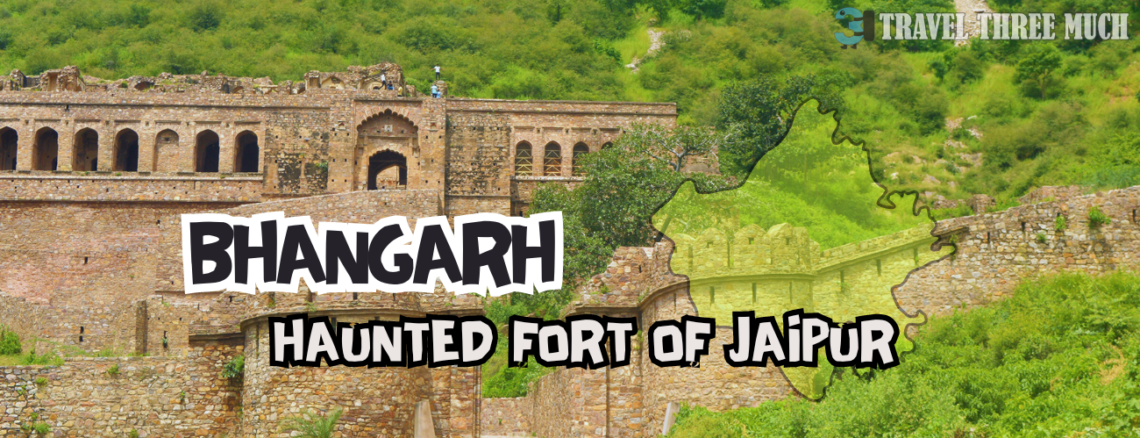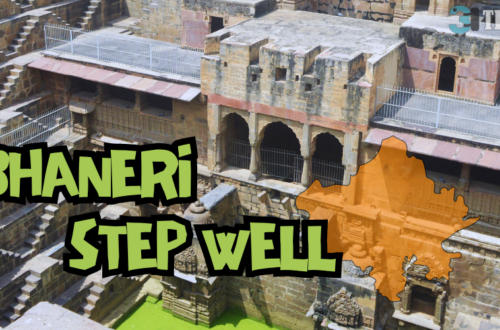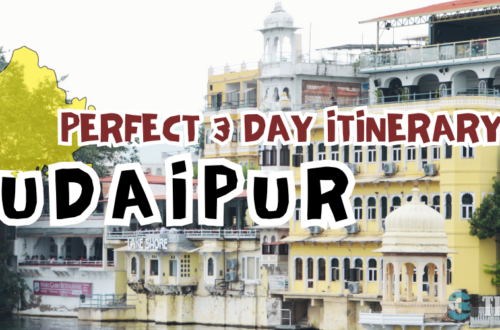
Bhangarh Fort- Mysteriously Magnificent!
The journey
We started our journey to the Bhangarh Fort, considered the most haunted fort in India from Jaipur. Our plan was to visit the fort and then the Abhaneri step well before returning to Jaipur. The fort is about 70 km to 80 km, depending on the route from Jaipur.
Of wizards and ghosts!
On the way, our driver shared some interesting folklore about the Bhangarh Fort and the reason for its decimation. According to him, a wizard tried to court the princess of the fort, the legendary beauty Ratnavati, against her wish.
Once, when the princess’ attendant went to the marketplace to get her perfume for her bath, the wizard tried to pass off a potion that would make the princess fall in love with the first person she set her eyes on as the perfume. When the attendant brought her the oil, the princess recognized the evil designs of the wizard and cast the potion out of her window. The potion fell on a rock, causing it to roll over the wizard who was there to ensure he would be the first person the princess sees after using the potion. The wizard, with his dying breath cursed the princess and all the inhabitants of the fort to destruction.
According to our driver, the ghosts of the Bhangarh fort gather around a large banyan tree in the fort in the night and feast on sweets that they enchant from Jaipur! Like almost everyone else in these parts, he also knew a couple of folks that decided to test the theories of supernatural presence in the fort after sundown and were never heard from again!
The other alternative tale offered for the fort’s dilapidated state is Guru Balu Nath, an ascetic who lived in the proximity of the fort’s ramparts much before the existence of the fort. He gave his assent to the fort’s construction on the condition that no structure of the fort shall cast its shadow on his meditation site or the town and its inhabitants shall incus his wrath and come to ruin. As the fort’s ruler gained power, he forgot the ascetic’s terms and added structures to the fort that cast a shadow on the ascetic’s abode, bringing about the prophesised end to the settlement.

Some not-so-fantastic facts
The town of Bhangarh was founded in the late 16th Century by King Bhagwant Das as a residence for his younger son, Madho Singh. Madho Singh’s choice of name for the fort town is said to originate from his grandfather Bhan Singh’s name. The historic reasons for the town’s devastated condition are unfortunately, not as fantastic as the folklore versions and are relatively pedestrian.
The settlement saw decline from 1630 when the ruler Chhatr Singh, Madho Singh’ descendant was killed. A neighbouring settlement Ajabgarh was also established which accelerated the decline by drawing away inhabitants to it.
Interestingly, it is Ajab Singh who established Ajabgarh whose name figures in the folklore version as not heeding the ascetic’s warning.
The final nail in the coffin seems to have been a famine in the year 1783 which drove away the remaining inhabitants to seek literally greener pastures.
The Fort complex
After a stop for breakfast and tea, we reached the fort complex’s entrance at 11:00 AM. The entire area is under the governance of the Archaeological Survey of India (ASI). Tickets can be either purchased at the counter with physical currency or booked online, with the government promoting online booking by offering a discount for the booking.
There are prominent ASI notices that inform entry to the fort is allowed only between sunrise and sundown and no stay is permitted in the fort complex beyond sundown.
This apparently is not for the fear of supernatural but because the area borders the Sariska tiger reserve and there have been untoward incidents in the past of individuals who’ve not heeded this notice.
The map of Bhangarh Fort
A stone map of the Bhangarh complex is kept at the entrance by ASI. There are 5 gates to the complex – Lahori, Ajmeri, Hanuman, Phoolbari and Delhi. The entrance to the complex is through the Hanuman gate, which gets its name from the Hanuman temple nearby.

Just past the gate, one comes upon a series of scattered ruins that open out into the market street or Jauhari Bazaar. This stretch reputedly used to house the courtesans of the Bhangarh rulers. All that’s left are the roofless plinths of the houses with partition walls and some residences retain alcoves in the walls that somehow make the setting less surreal and more human than the supernatural connotations that are usually attached with Bhangar.
The bazaar street reminded me of the Hampi’s bazaar streets… with an exception of the pattern of the arches.

A little way further down the street, the path is lined with tall broad banyan trees on both sides and leads to a garden in which temples dedicated to Somesvara (Siva), Gopinath (Vishnu) and Ganesh are set.


The path ends at the path that ascends to the various levels of the Bhangarh fort.
The lower levels have prisons whereas the upper levels offer breathtaking views in which the distant spires of the Mangla Devi and Keshav Rai temples seem to rise out of the green carpet that stretches as far as the eye can see.


We visited the Someshvara temple which has a tank attached to it. The tank has warning signs of poisonous life forms living in it. However, looking at the amount of plastic cast into it and the washing that was going on nonchalantly in the channels connected to the tank, it’s likely that the life forms outside the tank are more toxic than the ones inside!

The Gopinath and Ganesh temples are a testament to the marble craftsmanship one can find in Rajasthan.
Near the Ganesh temple and just before the mansion of the priests (Purohito ki Haveli), we found a likely explanation for the folklore we heard of ghosts with a sweet tooth that met after sundown.
A troop of langurs sitting in as much as a perfect circle as can be expected of them, were hooting and grunting the day’s happenings amongst themselves, or were they discussing the menu for dinner?! We weren’t sure as we made our way to the Abhaneri step well from Bhangarh fort enchanted by the surroundings, even if we didn’t run into any ghosts!




